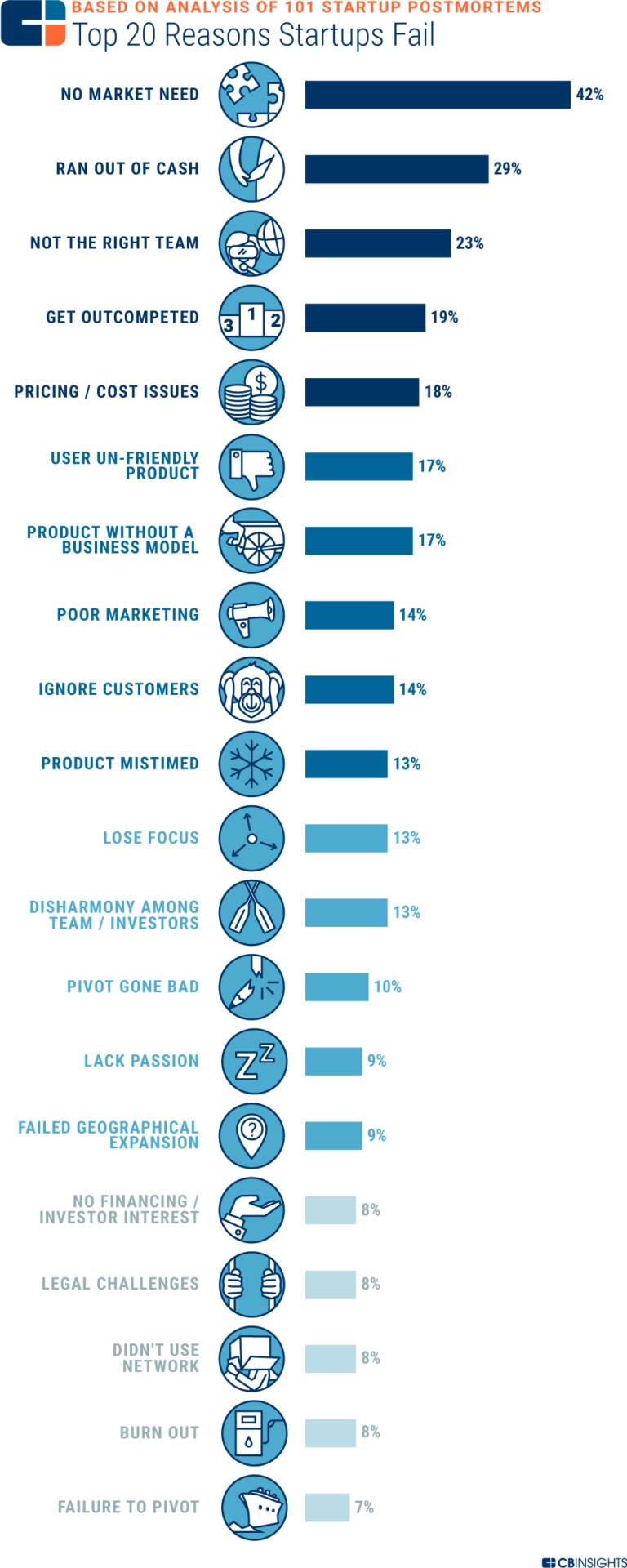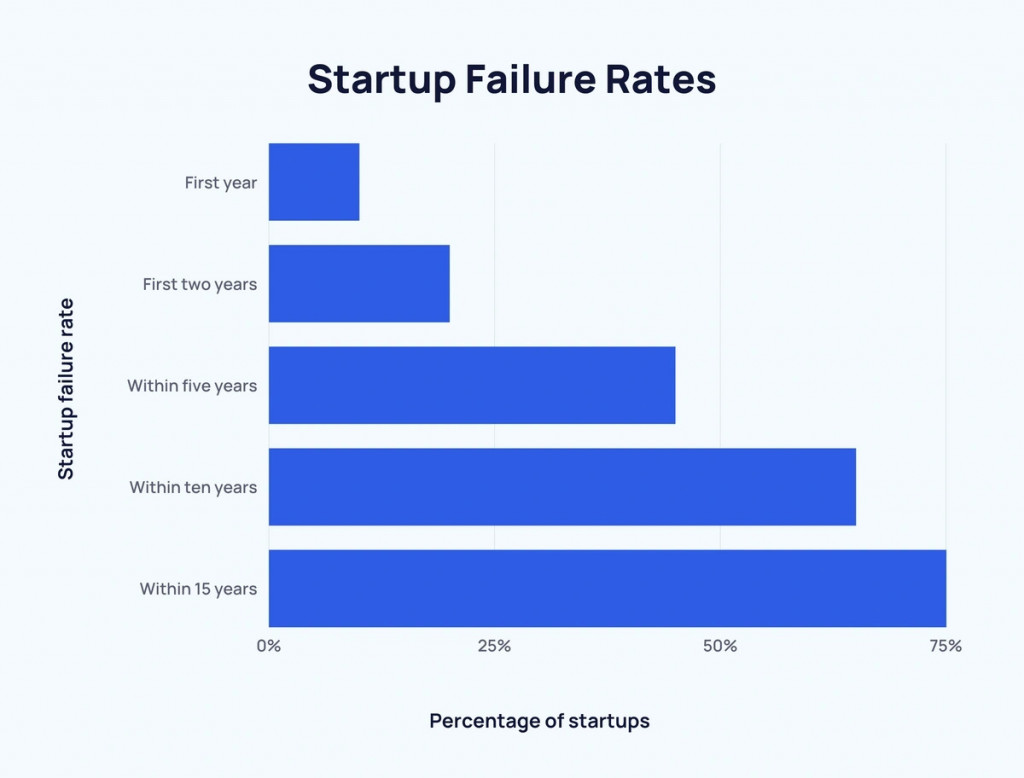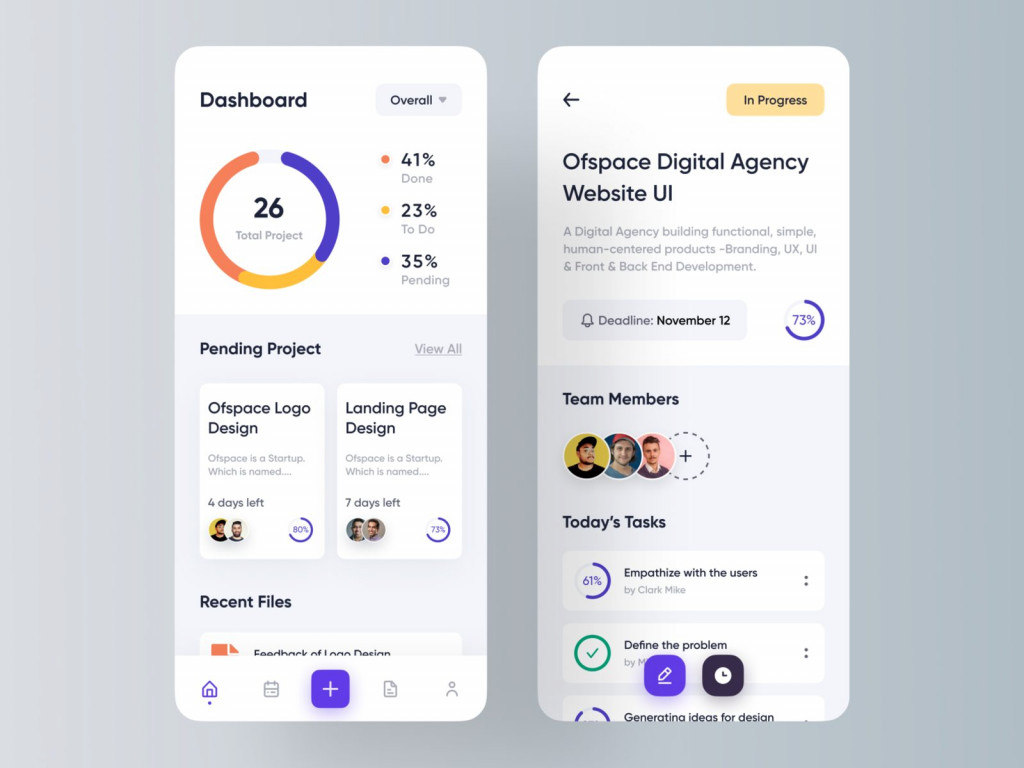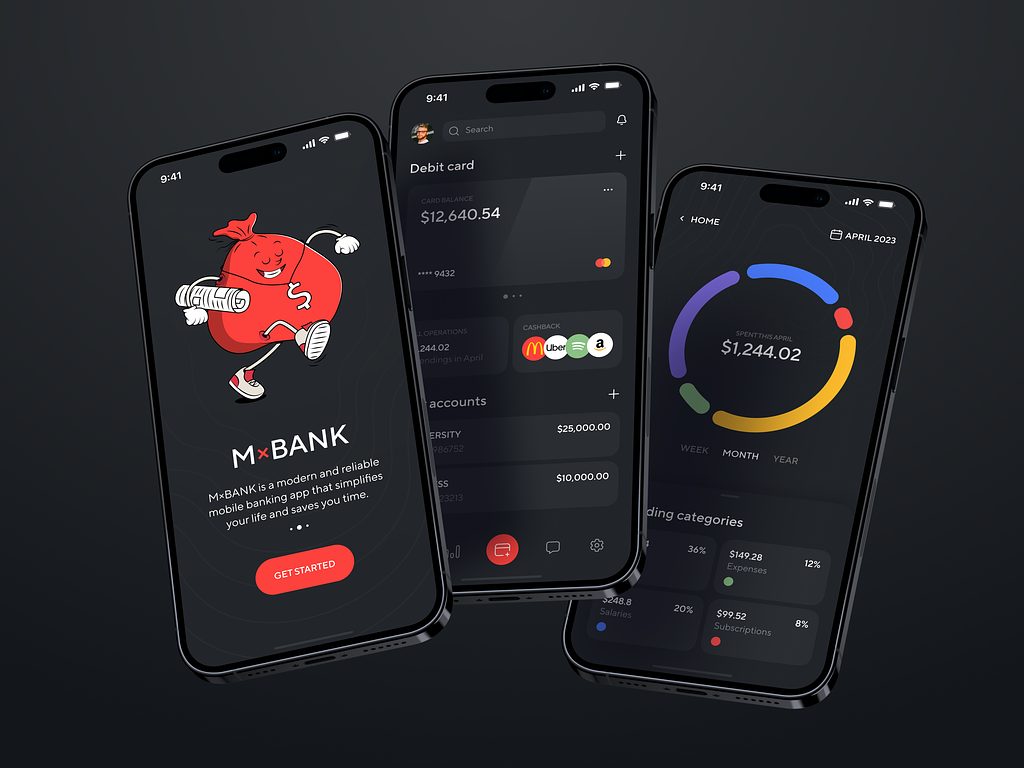Inspired entrepreneurs, especially first-timers, launch a startup to find out that creating a company from scratch is a complex and challenging process. But a very exciting one. Doesn’t this feeling of creation, of being a part of the next big thing, explain why a lot of talented people sacrifice their time and money, working extremely hard to build a new startup? Not forgetting to count the ability to manage things (almost) freely and a feeling of improving other people’s lives.
Contents:
The majority of business books focus on success stories. Otherwise, they wouldn’t have sold so well. But survivorship bias sometimes paints a picture too pretty to be true. What if instead of success stories, we study the stories of failure? In the frenzy of excitement, it’s easy to forget that in reality, the majority of startups crash-land in the first 3 years of their existence. The dream wears off, and the reality hits. The smartest thing an entrepreneur can do is to study exactly why startups fail, identify a problem, and think about how to prevent it. The CB Insights research portal made a list of the most common reasons for startup failure based on the post-mortems of the 101 failed startups (the figures exceed 100% because there is usually more than one reason):

It’s a tremendous work (not to mention that the record of post mortems has been expanded and now consists of more than 300 failure stories). But the 20-point list seemed too long for me to be perceived easily, so I decided to group the points and shorten the list to five top reasons, then to four, three until I finally realized that it all comes down to two main reasons: marketing and team.
Startup failure statistics
Only a third of startups make it to the 10-year mark, with every fifth failing during the first year. The worst startup failure rates for new businesses within the first five years include projects in construction, communications/utilities, transportation, finance, insurance, retail, and real estate. But these figures shouldn’t act as a reason to deprive yourself of the ability to have your say. A lot of things we love nowadays were never thought of in the past, and making something valuable out of nothing is a rocky road.

The very nature of a startup today, as opposed to 20 or even 10 years ago, is based on getting name and brand recognition, and growing market share at all costs. The number of apps in app stores has steadily increased with barriers to entry simultaneously decreasing. It means that getting started today might be easier than before. What’s tough is to break through the noise and stay afloat for long enough. This is where analyzing failure accounts instead of success stories can prove beneficial. So why do some startups succeed and others fail?
Marketing
Lack of adequate marketing research
The majority of problems with the product and the customers, like a user-unfriendly product, poor product timing, competition, pricing issues, etc. result from marketing research that wasn’t done properly. Including the most common problem with startups that affected 42% of founders — no market need.
For example, the meal kit startup Kettlebell Kitchen, which provided meal kits for specific diets, closed shop in November 2019, having had no opportunity to profit amid a crowded meal kit delivery market, with numerous rivals like HelloFresh and BlueApron. The cause of death for Vreal, a VR platform for video game streamers, was premature expansion, with the VR market developing at a slower rate than expected by the founders. Too often startup founders rely only on their own vision and on the opinions of friends and family, or/and don’t pay enough attention to the realities of the existing market. The importance of market research can’t be ignored. Otherwise, it can lead to a disability to solve market needs and a high rate of failures.
How to avoid
Product-market fit requires a product that people need to pay for and are used to paying for in order to solve a problem. The work of establishing a new venture should start with a long research phase, ideally long before thinking about the details of the product itself. Try setting up a landing page promoting early access to your product, getting traffic, and measuring engagement.
Poor marketing
At the same time, it’s common, even for products that fit the market, to lack proper marketing. Companies either sell their products in a way that doesn’t attract an audience, or they don’t understand what it is that people really want and try to push the wrong features. You can have the best product in the world, but if no one knows about it and isn’t appealing, then it won’t sell. Captivated by their product, many startup founders tend to neglect marketing efforts.

Project Management Mobile App by Nasim
How to avoid
The most important thing to realize is that no matter what business you are in, be it flower delivery or super tech VR/AR set, in reality, you are always in the marketing business. The sooner you realize it, the more chances for success you have.
Problems with pivoting: Pivot went bad/Failure to pivot
In startups, especially the tech ones, there are often two contrary concepts that have to be kept in mind: laser focus and the ability to pivot. The trickiest thing is to do them simultaneously without losing your balance. It’s important to outline the main goal of your project, not get sidetracked by secondary functions, and deliver what you’ve promised to your customers and investors. On the other hand, it’s not rare when startups make a complete restart with new ideas, and the basic concept almost always changes in one way or another affected by the market realities.
For instance, the Inboard Technology company that began as a Kickstarter project offering the development of electric skateboards failed in making a pivot to electric scooters. The drone company Airware stated in its shutdown announcement that “History has taught us how hard it can be to call the timing of a market transition. […] As we worked through the various required pivots to position ourselves for long-term success, we ran out of financial runway.”
On the other hand, if it happens that some of the secondary functions of your project prove to be far more popular among the audience than the primary one, it can be a wise decision to focus on exactly those functions. For example, YouTube has started a video-dating service but made a massively successful pivot into a major host of online videos as we know it today.
How to avoid
Keep focused on the main idea of your startup. Have a clear, realistic goal with a good 12-month, 2-year, 5-year, 10-year plan. Stay on target with the goal. Then again, don’t be blinded by over-focusing on your main goal at the expense of flexibility. Remember that the plan can change. If your 5-year plan looks the same after 5 years, then it’s out of date. Things change rapidly, and you should, too.

App development agency landing page by Shakuro
User-hostile product
It usually happens when entrepreneurs forgo the UI/UX design stage in an attempt to cut costs. Sometimes there can even be programmed from scratch products with no design at all. But successful products can’t be managed without the design phase. Even when working on flexible methodologies, you need to design first to avoid the situation that happened to the founder of the College Inside View startup. One of the reasons for the failures was underestimating the importance of design: “I had a strong belief that the value the site offered was mostly determined by the information and that it’d take a really bad design to detract from the value offering. I now believe that this is wrong.”
How to avoid
You always need to properly design a product first and make an MVP. But don’t go too far with cutting off vital functions.
Wrong team
Sometimes it can happen that however much expertise a team member has, they just aren’t up for this particular project. Startups require people that are startup-savvy. Or they may lack some vital qualities to make the project successful. The further the project goes, the more acute it feels.
How to avoid
Are startups good to work for? The best way is to hire experienced professionals to cover all areas of your business. For tech startups, there is one more option. You may consider the use of an external custom software development company with valuable startup-building experience.

Mobile Banking Application Design by Shakuro
Disharmony within team
For seed-stage companies with multiple founders, it is often the team dynamics that kill it. The pressure of working at a startup can be too intense for some relationships. Founders need to maintain quality communication with each other to avoid quarreling and misunderstanding.
How to avoid
Two words: team alignment. Don’t forget to work with your team. Make sure everyone understands what it’s all about. The majority of team members will change with the passage of time and it’s normal, whether they decide to go away by themselves or are laid off due to various reasons. Just make sure that new members understand and agree on the major goals of your company. Even if you are using the benefits of extended teams, as many other startup founders do nowadays, it’s still important to align your team around the main goals. In today’s global economy, the majority of startup teams are distributed ones. However, it’s still possible to maintain that level of transparency even if your team members are distributed all over the world. Check out our guide on remote work problems and solutions (the title says it’s about design, but most of the solutions are universal).
Burn out
Even if a project has survived for several years, founders may face the insidious problem of burnout, when after years of hard work people don’t feel like they have the same amount of energy or creativity anymore. Like the founder of the failed Blurtt startup has said, “The problem with burnout is that you become hopeless and you lose every aspect of your creativity. I’d go to work feeling tired and exhausted. I was burning the candle at both ends”.
How to avoid
The solution may be hiring additional talented and creative people and managing the life-work balance, however hard it can be when working on a startup.

Finance Management Mobile App by Shakuro
Lack of passion
The grind sets in. The idea is replaced with reality. This problem arises primarily when an entrepreneur doesn’t know what their motivation is and why they’ve started a business at all.
How to avoid
To successfully go through a crisis, you should have a clear understanding of why you’re doing what you’re doing: to get rich, to create a business and sell it, to change the world and leave a mark. Determine the real reason that drives you. But remember that even if you’re planning on selling it, be aware that you can only sell a business that works well.
Money
Finally, the financial problems that have sunk 37% of startups, are not the problems as such but the consequences of bad marketing or the team, that just wasn’t right for the task.
It’s not the lack of money that causes startups to fail. People and companies run out of cash when costs exceed income. When can it happen? As a result of failure to market the product (hence the loss of investors’ interest) or the problems with management.
If you’d like to learn about more ways how startups raise funds, head out to our separate article on the topic.
Costs of development
Although there is such a thing as the typical or average cost of website development, without a sufficient amount of detail, it’s impossible to estimate an app’s cost, just as it’s not easy to say how much a car costs without knowing its characteristics. On paper, it might look all cut and dried, but when reality hits you on the head, you get wobbly. That’s why it’s important for our team, our clients, and all potential app startup owners to have a strong mindset about the cost of website development and see how exactly it works.
Are startups worth it?
In hindsight, it all may look clear. In reality, of course, it is not so. There are multiple reasons for startup failures, but it seems that it all comes down to marketing and team. The Five whys method developed by Sakichi Toyoda for use within the Toyota Motor Corporation, states that there’s always a prime cause for everything, and it’s much more beneficial to learn how to fix that one big thing instead of trying to alleviate the consequences. Failure doesn’t happen by accident. It starts through ignorance which can be fixed.
In the future, startups will continue to lead innovation. Though some of the statistics may not sound encouraging, with careful planning and a lot of determination, it’s possible to create a product that would change the world and make your dreams come true.
Do you have a project that you want to bring to life? Contact us and let’s create a versatile product together.
This article was originally published in June 2020 and was updated in March 2022 to make it more relevant and comprehensive.
